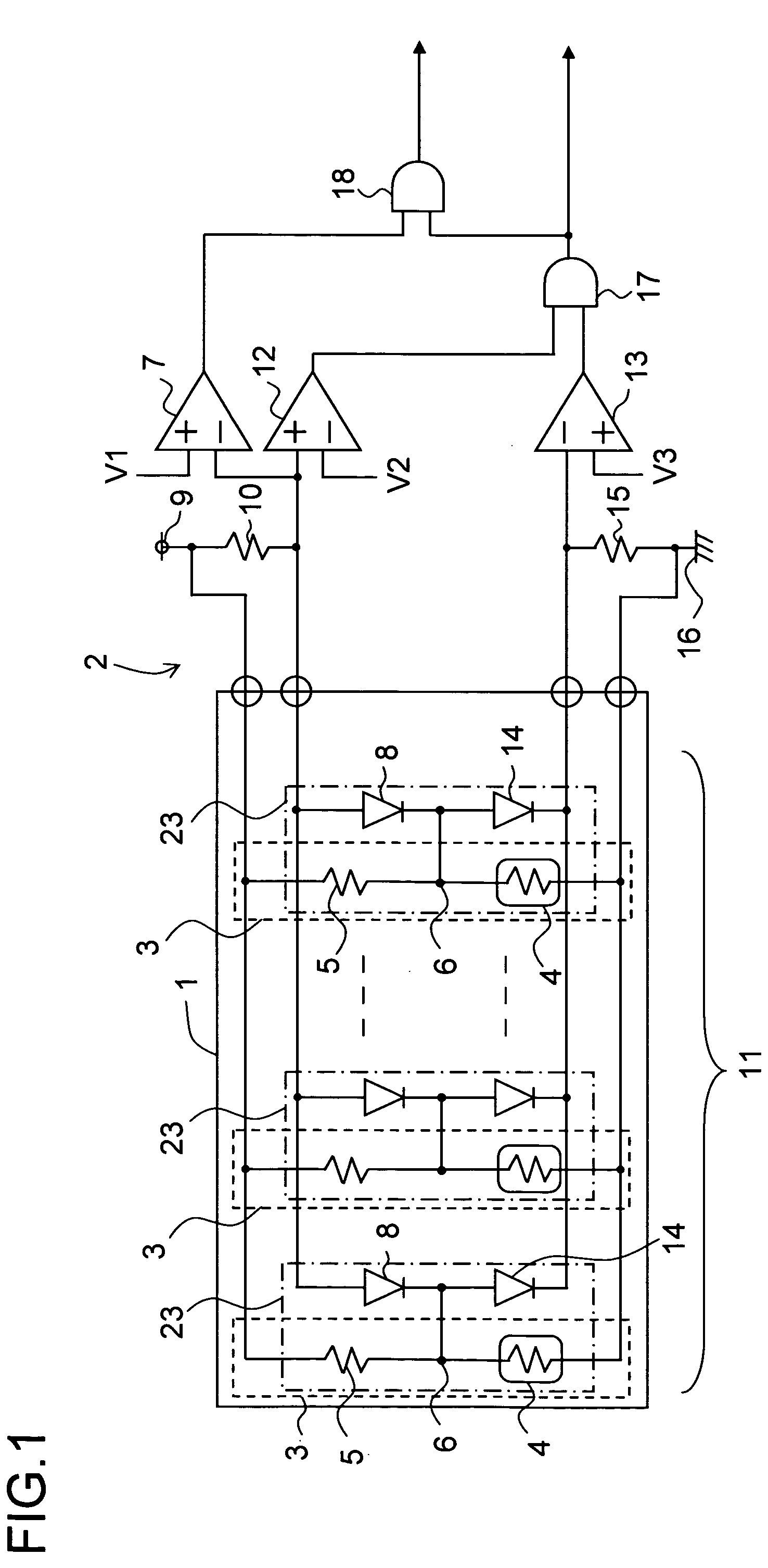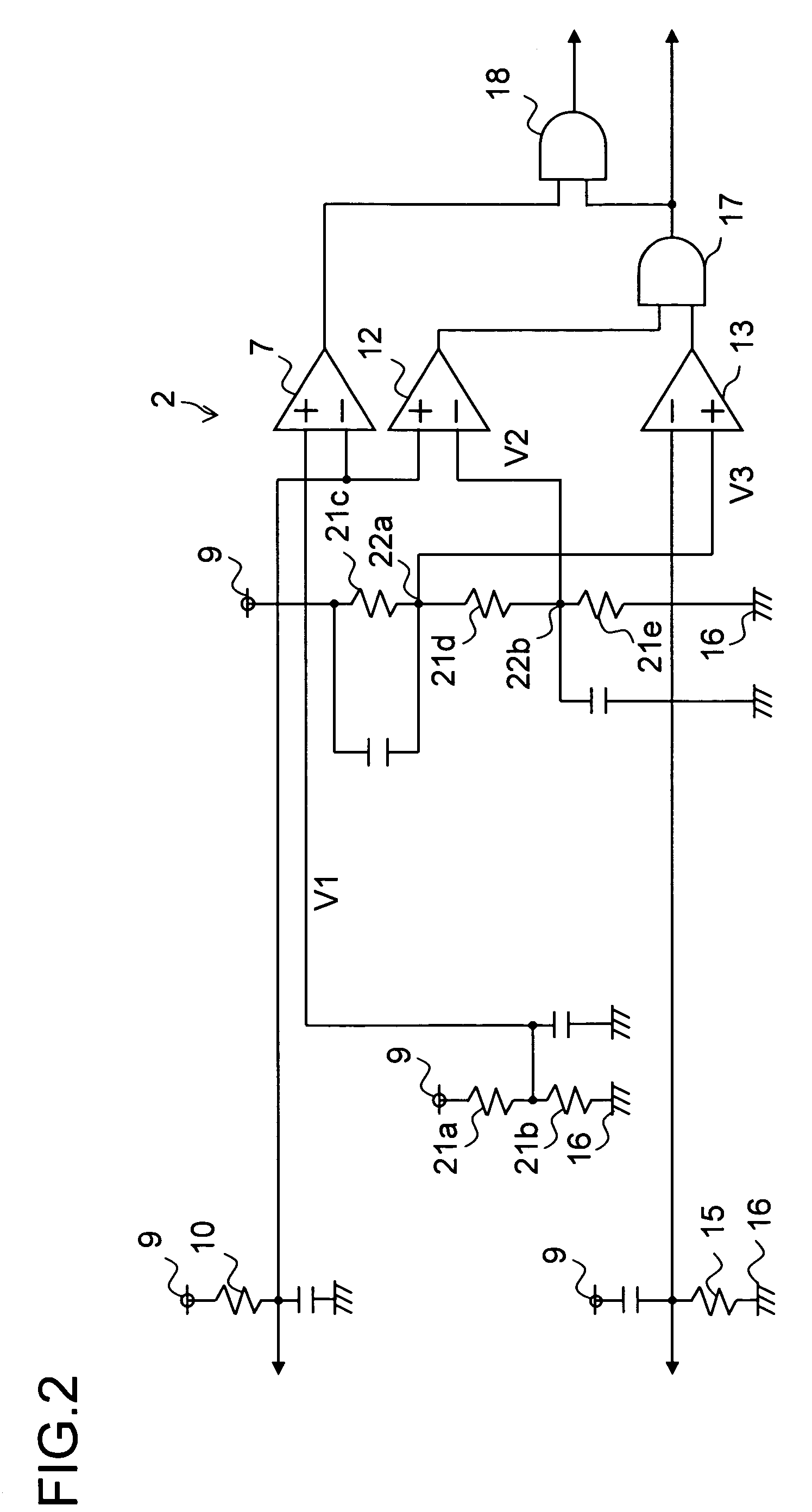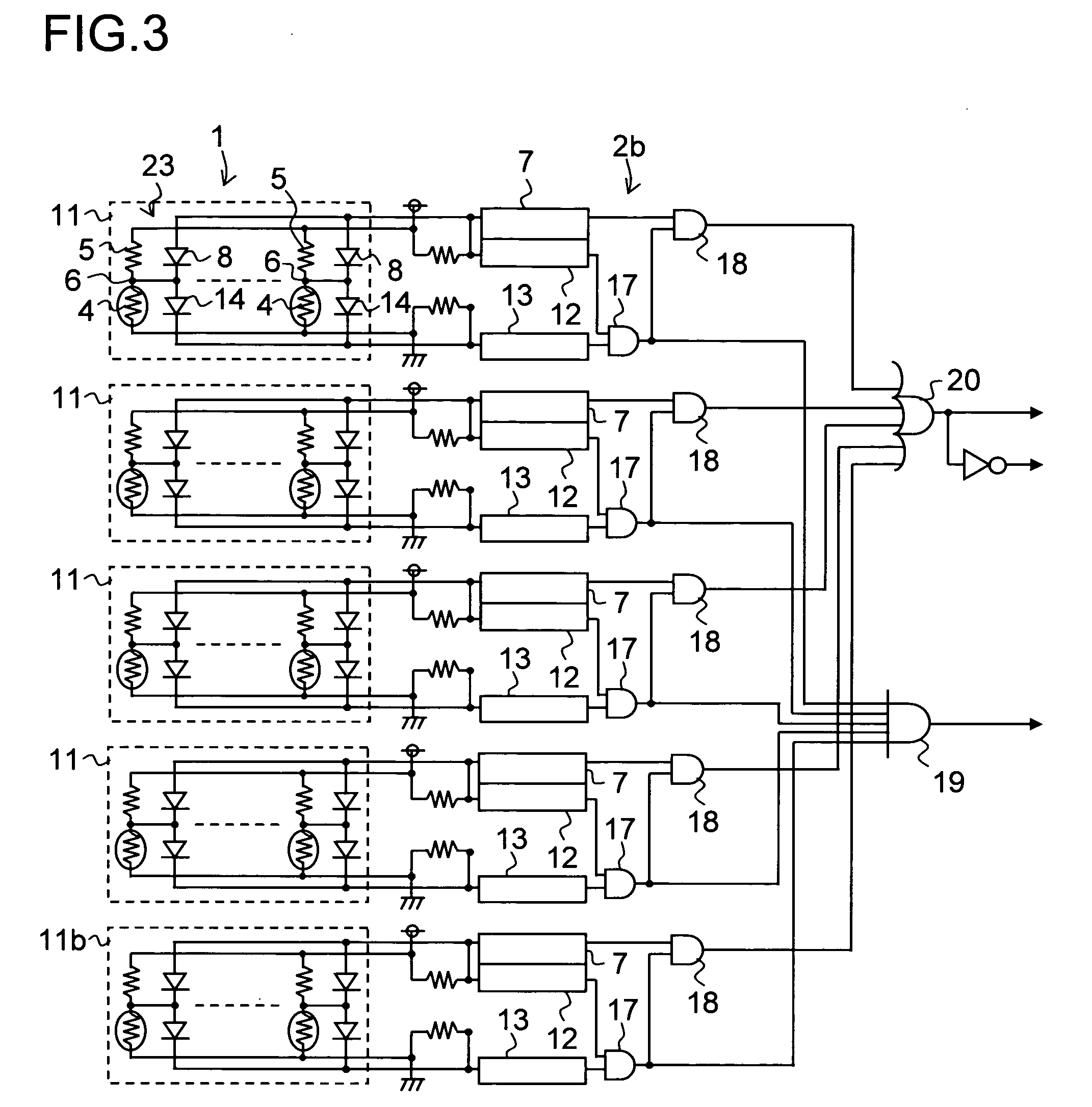Power supply apparatus
a power supply and battery technology, applied in the field of power supply apparatuses, can solve the problems of one or more particular battery cells deteriorating, not all the battery cells deteriorating evenly, and the temperature of the battery cells becoming considerably high, so as to reduce the detection accuracy, reduce the cost, and improve the effect of accuracy
- Summary
- Abstract
- Description
- Claims
- Application Information
AI Technical Summary
Benefits of technology
Problems solved by technology
Method used
Image
Examples
first embodiment
[0049] Hereinafter, the power supply apparatus of a first embodiment of the present invention will be described with reference to the drawings. It should be understood that the first embodiment described below and the second and third embodiments that will be described later are all intended merely to present examples of power supply apparatuses in which the technical idea of the present invention is embodied, and thus none of the power supply apparatuses specifically presented below is meant to limit the present invention in any way.
[0050] Power supply apparatuses embodying the invention (the power supply apparatus of the first, second, and third embodiments of the invention) are mounted on vehicles (not illustrated) such as hybrid cars, electric automobiles, and electric forklifts, or vehicles or the like (not illustrated) that run indoors to transport goods, so as to be used as power sources for driving the motors (not illustrated) that make those vehicles run. Power supply appa...
second embodiment
[0085] Next, the power supply apparatus of a second embodiment of the present invention will be described with reference to the drawings. FIG. 3 shows a circuit diagram of the power supply apparatus of the second embodiment. In FIG. 3, such portions as are found also in the FIG. 1 are identified with common symbols, and no explanations of their design and operation will be repeated.
[0086] The power supply apparatus shown in FIG. 3 includes: a battery 1; and a temperature detection circuit 2b for detecting the temperature of the battery 1. The temperature detection circuit 2b includes four temperature sensor circuits 11 and one temperature sensor circuit 11b. The battery 1 is composed of, for example, 130 battery cells 3 connected in series with one another, and the temperatures of these 130 battery cells 3 are detected by the four plus one temperature sensor circuits 11 and 11b. For example, the four temperature sensor circuits 11 each have 30 temperature detection units 23 so that...
third embodiment
[0092] Next, the power supply apparatus of a third embodiment of the present invention will be described with reference to the drawings. FIG. 5 shows a circuit diagram of the power supply apparatus of the third embodiment. In FIG. 5, such portions as are found also in the FIG. 1 are identified with common symbols, and no explanations of their design and operation will be repeated.
[0093] The power supply apparatus shown in FIG. 5 includes: a battery 1; and a temperature detection circuit 2a for detecting the temperature of the battery 1. The temperature detection circuit 2a includes: the same number of temperature detection units 23a as there are battery cells 3 (i.e., n temperature detection units 23a), with the temperature detection units 23a used to detect the temperatures of the battery cells 3 individually; a power supply (power supply circuit) 9; a first comparator 7a; a second comparator 12a; a third comparator 13a; a pull-down resistor 10a; and a pull-up resistor 15a. The n ...
PUM
 Login to View More
Login to View More Abstract
Description
Claims
Application Information
 Login to View More
Login to View More - R&D
- Intellectual Property
- Life Sciences
- Materials
- Tech Scout
- Unparalleled Data Quality
- Higher Quality Content
- 60% Fewer Hallucinations
Browse by: Latest US Patents, China's latest patents, Technical Efficacy Thesaurus, Application Domain, Technology Topic, Popular Technical Reports.
© 2025 PatSnap. All rights reserved.Legal|Privacy policy|Modern Slavery Act Transparency Statement|Sitemap|About US| Contact US: help@patsnap.com



